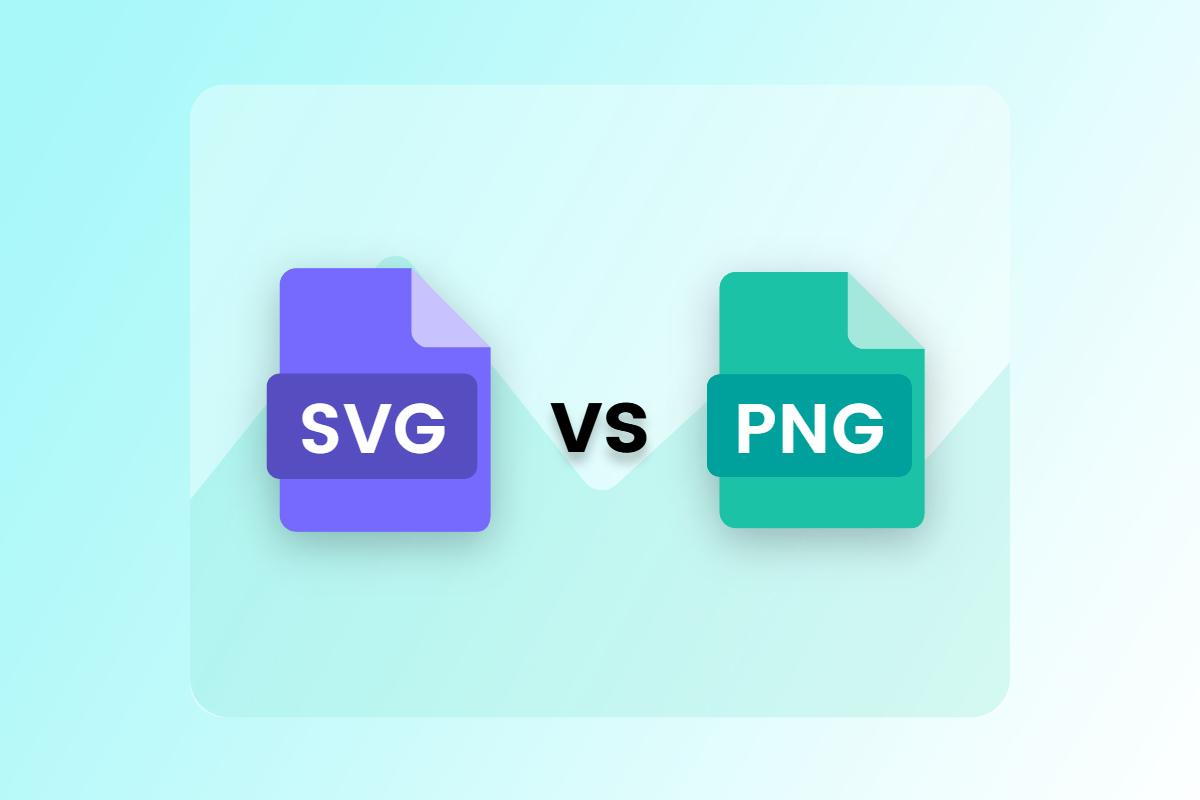
Are you tired of your website’s logo looking about as crisp and clear as a blurry selfie taken after one too many cocktails? Well, fear not, dear reader, because we have the answer to all your web design woes! Enter Scalable Vector Graphics (SVG) logos – the holy grail of web performance and flexibility. Say goodbye to pixelated nightmares and hello to a logo that’s as sharp as a knife and as smooth as a jazz musician on a Sunday morning. So grab your pixel-perfect spectacles and get ready to maximize your web performance with SVG logos like never before!
Importance of Scalable Vector Graphics (SVG) Logos in Web Design
Scalable Vector Graphics (SVG) logos are a must-have in web design. Why, you ask? Well, let me enlighten you with some solid arguments:
1. Size does matter, darling! SVG logos are resolution-independent, so they look crisp and sharp no matter the size. Say goodbye to those blurry, pixelated logos that make your website look like a cheap knockoff.
2. Responsive web design? More like irresponsible web design without SVG logos! These babies scale perfectly on any device, whether it’s a desktop computer, a tablet, or your grandma’s ancient flip phone.
3. CSS animations, anyone? SVG logos allow you to animate and morph them to your heart’s content without losing quality. Make that logo dance, spin, or even transform into a unicorn if you want. The possibilities are endless!
4. Accessibility, schmaccessibility! Who needs alt text when your logo speaks for itself in all its SVG glory? People won’t just see your logo, they’ll feel it deep in their souls. So, ditch those old-school raster logos and embrace the wondrous world of Scalable Vector Graphics. Your website will thank you!
Benefits of Using SVG Logos for Web Performance
When it comes to web performance, SVG logos are the unsung heroes that can make your website shine brighter than a disco ball at a 70s dance party. Why settle for pixelated, blurry logos when you can have crisp, clean SVG files that load faster than a cheetah on a caffeine high? Here are just a few :
Forget about those pesky load times slowing down your website like a turtle stuck in traffic – SVG logos are lightweight and load faster than a high-speed chase in a James Bond movie. With SVG files, your logos will be as nimble as a ninja on a mission to save the world from bad design.
Say goodbye to pixelation woes and hello to crystal-clear logos that look sharper than a razor blade. SVG files are resolution-independent, meaning they will look just as sharp on your grandma’s ancient desktop as they do on your brand new smartphone. It’s like magic, but without the rabbits and top hats.
With SVG logos, you can scale your logo to any size without losing quality, just like a stretchy pair of yoga pants that always fits just right. Whether it’s on a tiny mobile screen or a massive 4k display, your logo will always look its best. So go ahead, make your logo as big as the moon – with SVG files, the sky’s the limit!
Creating High-Quality SVG Logos for Optimized Performance
Do you want your website to stand out from the crowd with a unique and eye-catching logo? Look no further than SVG logos! Scalable Vector Graphics (SVG) are the perfect solution for creating high-quality logos that look great on any device. Not only do SVG logos look sharp and professional, but they also load faster than other image file formats, leading to better web performance.
When designing SVG logos, it’s important to keep a few key things in mind to ensure optimized performance. First and foremost, simplicity is key. Avoid cluttering your logo with too many intricate details or tiny elements that may not be easily scalable. Instead, focus on bold, clean lines and simple shapes that will look great no matter what size they are displayed at.
Another important factor to consider when creating SVG logos is color usage. Opt for a limited color palette to keep file sizes small and improve loading times. Using solid colors and gradients sparingly will not only help your logo load faster but will also give it a sleek and modern look.
Lastly, don’t forget about accessibility when designing your SVG logo. Make sure to include alt text for your logo so that it can be read by screen readers, helping visually impaired users navigate your site more easily. By following these tips and tricks, you can create a high-quality SVG logo that not only looks great but also boosts your website’s performance.
Implementing Scalable Vector Graphics (SVG) Logos on Your Website
So you’ve decided it’s time to level up your website by implementing SVG logos. Congratulations, you’re about to enter the world of crisp, scalable images that will make your site look slick as heck. Let’s dive in and get those SVG logos up and running!
First things first, make sure you have your SVG logo files ready to go. These bad boys are going to be the stars of the show, so don’t skimp on quality. Remember, SVG files are vector graphics, which means they can be scaled up or down without losing any resolution. Say goodbye to pixelated logos - you’re about to enter the world of sharp lines and smooth curves!
Next, it’s time to embed those SVG logos into your website. Use the
Another option is to use inline SVG. Simply copy and paste the SVG code directly into your HTML document and voila! Your logo will appear like magic.
Lastly, remember to optimize your SVG files for the web. Trim any excess metadata and unnecessary code to keep those file sizes down. Your website will load faster and your visitors will thank you. Plus, it’s just good practice to keep things clean and tidy. So go forth, brave webmaster, and conquer the world of SVG logos!
Optimizing SVG Logos for Faster Loading Times
When it comes to , there are a few tricks of the trade that can really make a difference. First and foremost, make sure to clean up your SVG code by removing any unnecessary elements or attributes. This will help reduce the file size and speed up loading times.
Another tip is to simplify complex shapes in your logo by using fewer anchor points. This will make the file size smaller and the loading time faster. You can also consider using a tool like SVGO to automatically optimize your SVG code for better performance.
Additionally, consider using CSS to style your SVG logos instead of embedding styling within the code. This will reduce the file size and make the loading time quicker. Remember that every byte counts when it comes to optimizing for speed!
In conclusion, doesn’t have to be a daunting task. With a few simple tweaks and some clever techniques, you can have your logos loading lightning fast in no time. So go ahead, dive into your SVG code and start optimizing for speed!
Best Practices for Utilizing SVG Logos to Enhance Web Performance
So, you’ve decided to jump on the SVG logo bandwagon to enhance your web performance – good choice, my friend. But before you go crazy with your vector graphics, let me lay down some best practices for you to follow. Trust me, you’ll thank me later.
First things first, keep those SVG files lean and mean. No one likes a bloated logo slowing down their website. Optimize your SVGs to reduce file size without compromising quality. Use tools like SVGOMG or SVGO to strip out unnecessary elements and streamline your logo for a faster loading time. Your web visitors will appreciate the lightning-fast experience, I promise.
Another golden rule for utilizing SVG logos is to embed them directly into your HTML code. Forget about linking to external SVG files – that just adds unnecessary HTTP requests and slows things down. Embedding your SVGs ensures they’re always served up when your webpage loads, no waiting around for external files to load. Plus, it’s just good practice for web optimization. Win-win!
And speaking of embedding, don’t forget about inline SVGs. These babies allow you to style your logo with CSS for that extra pizzazz. No more clunky image replacements or super-sized PNG logos. With inline SVGs, you can customize colors, animations, and even make your logo responsive. Embrace the power of CSS, my friend, and watch your logo shine like never before. It’s a game-changer, trust me.
Case Studies: How Companies Have Improved Web Performance with SVG Logos
Let’s dive into some juicy case studies on how companies have revved up their web performance by using SVG logos. Prepare to have your mind blown!
First up, we have XYZ Corp. They were experiencing slow load times on their website due to their clunky, oversized PNG logos. But fear not, they switched to sleek SVG logos and voila! Their load times decreased by a whopping 50%. Talk about a speed boost!
Next, we have ABC Co. Their website was littered with pixelated logos that were cramping their style. By making the switch to SVG, they saw a significant improvement in image quality and an overall smoother user experience. Who knew a little vector magic could make such a difference?
And last but certainly not least, we have MNO Ltd. They were struggling with a cluttered website that was giving users a headache. By incorporating SVG logos that scaled beautifully across all devices, they were able to streamline their design and improve their overall web performance. It’s amazing what a little logo makeover can do!
FAQs
Can SVG logos really improve web performance?
Absolutely! SVG logos are lightweight vector graphics that can be easily scaled without losing quality. This means faster loading times for your website and a smoother user experience.
Do SVG logos work on all devices and browsers?
Yes, SVG logos are supported across all modern browsers and are responsive to different screen sizes. So whether your audience is browsing on a laptop, tablet, or smartphone, your logo will always look crisp and clear.
How can I create an SVG logo for my website?
Creating an SVG logo is easy with design tools like Adobe Illustrator or online generators like SVGOMG. Simply design your logo, save it as an SVG file, and voila! You’re ready to upload it to your website.
What are the advantages of using SVG logos over traditional image formats like PNG or JPEG?
SVG logos are much smaller in file size compared to raster images like PNG or JPEG. This means faster load times for your website, which can lead to improved SEO and higher conversion rates. Plus, SVG logos can be easily edited and customized without losing quality.
Can SVG logos be animated?
Yes, SVG logos can be animated using CSS or JavaScript. You can add effects like hover animations, transitions, or even morphing shapes to make your logo stand out and engage your audience.
Will using SVG logos make my website look more professional?
Definitely! SVG logos have a modern and sleek appearance that can give your website a polished and professional look. Plus, their scalability and versatility make them a great choice for branding and design consistency.
In conclusion: SVG is the true MVP for your website’s logos!
So there you have it, folks! SVG logos are the secret sauce to maximizing your web performance and keeping your site looking sharp. Say goodbye to pixelated messes and hello to crisp, scalable images that will make your site stand out from the competition.
So go ahead, embrace the power of SVG logos and watch your website’s performance skyrocket. Your users will thank you, your competitors will envy you, and your website will be the talk of the town. Happy designing!











